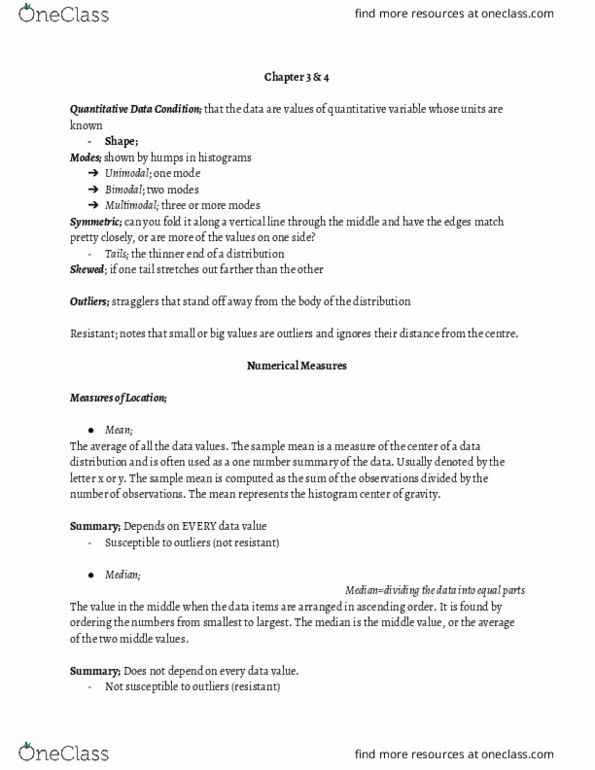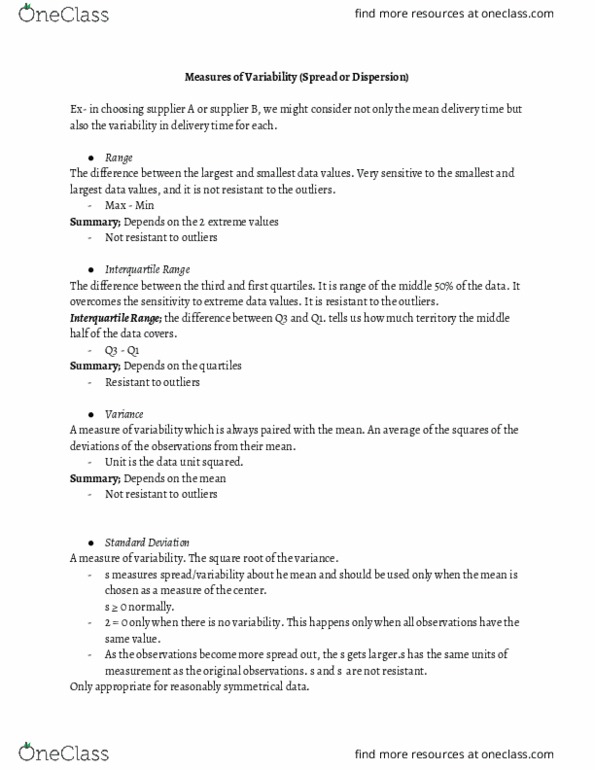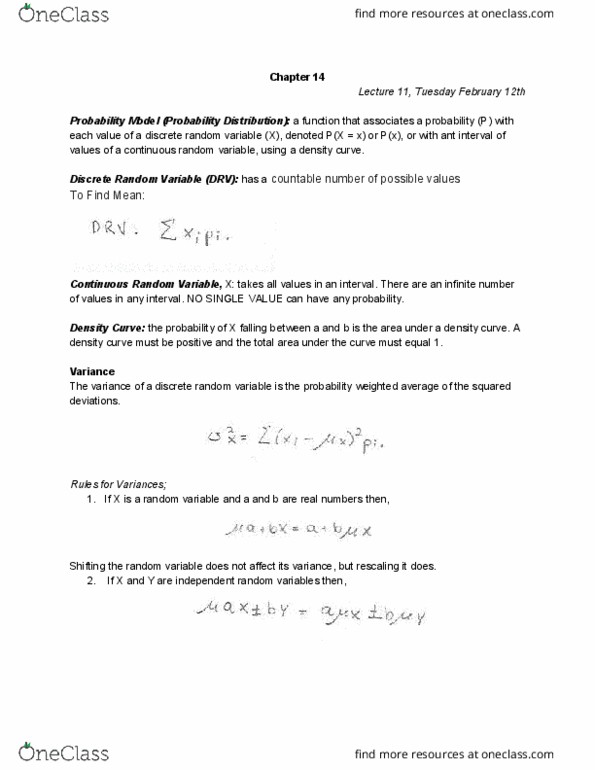MATH 1060 Lecture 11: Discrete Probability Models
MATH 1060 verified notes
11/11View all
Document Summary
Discrete random variable (drv): has a countable number of possible values. Continuous random variable, x: takes all values in an interval. There are an infinite number of values in any interval. Density curve: the probability of x falling between a and b is the area under a density curve. A density curve must be positive and the total area under the curve must equal 1. The variance of a discrete random variable is the probability weighted average of the squared deviations. If x is a random variable and a and b are real numbers then, Shifting the random variable does not affect its variance, but rescaling it does. If x and y are independent random variables then, A discrete random variable ( drv) has a probability mass function (pmf) , p(x), which satisfies: The cumulative distribution function (cdf) , f(x) = p(x x) 0 f(x) 1. f(x) is non-decreasing. Pmf x2 p(x2) xn p(xn) x p(x) x1 p(x1)




